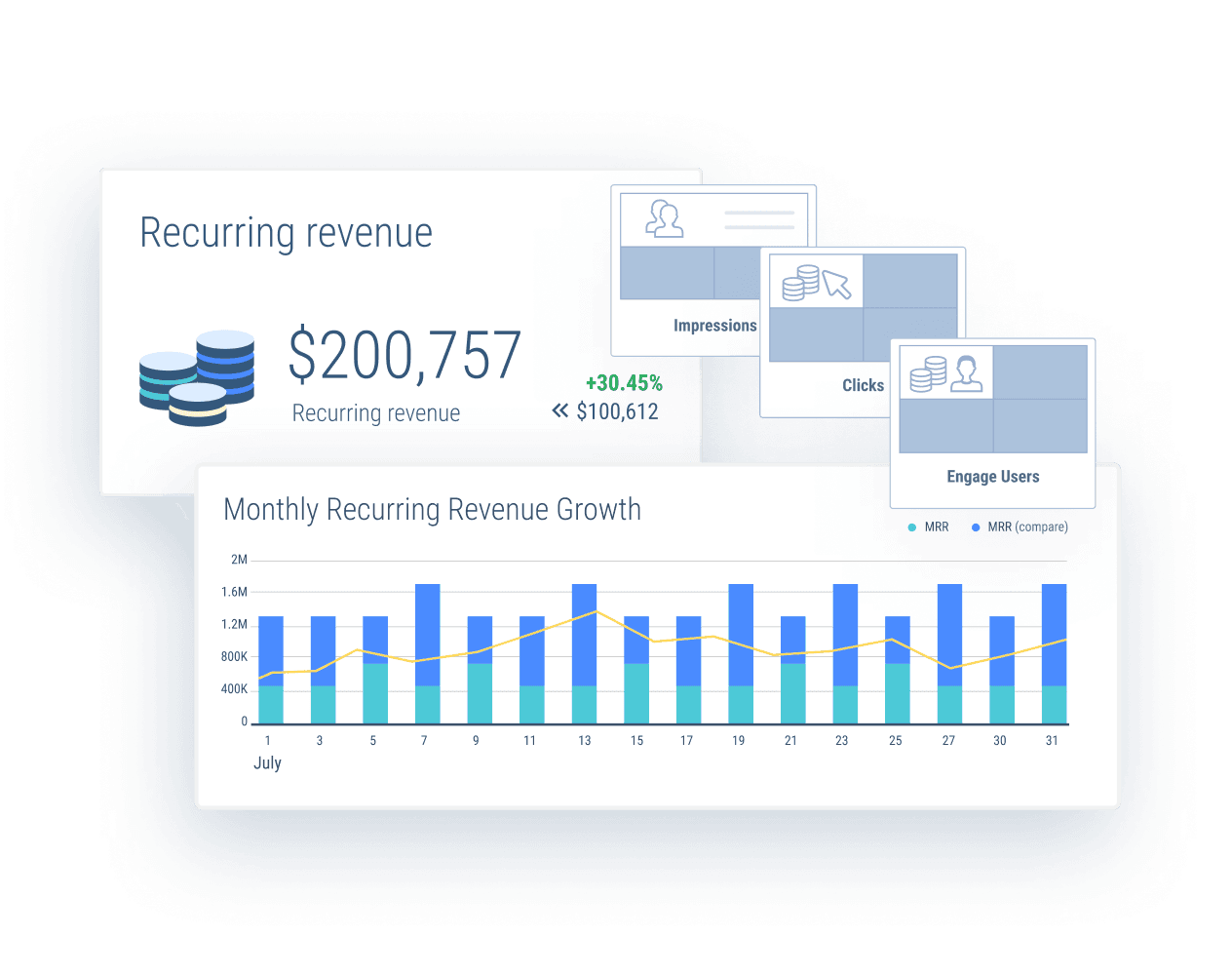OKR vs KPI: which one to use
When it comes to performance management two aspects or elements that are often compared are OKR and KPI. Truth be told, there can be some overlap between the two, but as concepts, they are indeed different. That being said, it's really not the case that you have to pick one and forget about the other, considering how it would be like comparing apples and oranges. To that end, we will example both OKR and KPI, go over their pros and cons, and how you should use them to improve the overall performance of the company.

May 05 2021●7 min read

What is KPI?
KPI stands for "Key Points of Interest" and these are usually displayed on a performance report when someone needs to evaluate the efficiency of a certain program, project, campaign, whole department, or even an individual. In other words, the things we regard as KPIs might vary depending on the report we are trying to generate, however generally speaking they typically reveal the information related to:
- Strategic objectives
- Asset performance
- Resources or Return of Investment
Meaning KPI should be something that is measurable, like the number of sales, or a number of leads, click-through rate, user engagement, average revenue per sales team member, the average cost per employee, etc. It should give the direct answer if you are meeting your goal, having satisfactory performance, or if there are possible performance issues in a certain department. It basically needs to show you what needs to change.
What is OKR?
OKR stands for "Objectives and Key Results" or to be more specific these are objectives that are tied to the key results. When setting OKRs, you need to ask yourself whether it's aligned with your business's overarching goals. So, right off the bat, you can get the idea why these two are not something you would compare. OKR is sort of a framework and KPIs exist within that framework as measurements.
OKR is pretty straightforward and it needs to be because the idea is to use specific metrics that would allow you to track goal progression or achievements. A company or an organization usually has between 3 to 5 essential objectives and each of these objectives has several KPIs that represent objective progression. In other words, these objectives are numerically graded in order to evaluate the overall performance.
OKR need to be:
- Quantifiable
- You need to be able to score or grade them on a scale whether it's from 1 to 10 or from 1 to 100
- You need to have a timeline for reaching the objective
- They should be achievable, realistic but at the same time ambitions
The growth-oriented organizations really love to use OKR, and they use different tools to help them measure progression and also generate reports. You can see YouTubers measuring the number of views, subscribers, how the audience engages with the video, number of likes, comments, and shares. These are all metrics that are important for success.
One tool that is great for OKR and KPI tracking is Whatagraph. It's a tool used for collecting, analyzing, and visualizing data, therefore users can create a detailed report. Thanks to the multiple integration options you can track user engagement on social media, create sales reports from your e-commerce platform, or see if your Google Ads are having a satisfactory ROI.
Examples of OKRs and KPIs
When it comes to KPIs there are really a great number of things that can be a performance indicator. As stated as long as you can measure that or evaluate the progress of that goal, then you can have KPIs. So let's just mention some examples of KPI in different lines of work.
- Marketing team: number of affiliate marketers, number of website visitors, ads engagement, number of impressions, number of mentions
- Retail industry: Same-store sales, customer distribution based on location, number of sales per sales agent, lead conversion rate
- HR Department: employee performance, recruitment time, employee satisfaction
- Healthcare industry: patient wait time, patient satisfaction, number of scheduled appointments
- Sales team: Number of paid subscribers, customer lifetime value, customer retention rate, cart abandonment rate
- Customer support team: client satisfaction, number of open/resolved tickets, average queue wait time
As you can see these are all concrete examples, and all of them are measurable in some way or form. The idea is to segment the department into different components that you can evaluate and work on individually, therefore any change no matter how small can contribute to overall performance. Also, if things are not going well, it's not a single element that brings about the downfall, it's more of a death-by-thousand cuts situation, so keep a close eye on all of the KPIs.
As far as the OKR goes you will always have the main objective and a few key results that need to support that objective.
The objective can be - Becoming the market leader in your town by the end of the year. This objective needs to be followed by a few key results which will put you on the top spot like:
- Increase revenue by 1.5 million USD
- Hire 20 additional subject matter experts
- Open 3 more branch offices in the same town
As you can see it's broader and ambitious compared to KPIs, the idea is to know precisely what you need to do and then break down each of these goals into more meaningful chunks. Once you do that you will track the performance of those smaller parts using KPIs.
Which One is Better?
Considering how there is really not a clear difference in OKR vs KPI debate, or to be specific one is part of the other, it's hard to say which one is better. That being said we can discuss which one is more useful for business growth.
If we were to measure the usefulness of KPIs and OKRs, then realistically speaking KIPs are far more useful. OKRs are mainly used to remind you of your goal and what you wish to achieve, but in reality, the means of achieving this or finding a way to achieve those goals will come from KPIs and data analysis.
Moreover, when you think in terms of KPIs you think about how to break down a certain component and make it more manageable. This gives you an opportunity to create smaller goals and objectives which are way easier to meet compared to those that come from OKRs. When you have this type of goal setting you will also have more minor achievements and reassurance that you are indeed going in the right direction one step at a time. These small victories are meaningful and have a positive impact on your motivation which makes it more likely for you to achieve goals and the ultimate objective.
Finally, monitoring performance and KPIs give you a better overview of potential problems and how you can solve them. So, even when they do come up, the resolution will come to a lot quicker, and you are more likely to streamline the operations which will ultimately lead to success and realization of the set goals.
How to Monitor KPIs
As stated before you can keep an eye on your KPIs or their progression using various software which was designed to track that sort of thing, but even that has its limits. One of the common ways how organizations manage KPIs is by relying on the report-down structure.
Report-down structure means that everyone manages a certain department and has a few other team members within that department that are responsible for tracking and improving the KPIs of that department. Then all of those managers report to another director or chief of the department who are the main decision-makers. This is how you streamline the operation and how all of the different metrics that you need to track don't become overwhelming. This KPI approach actually allows you to work smart rather than hard and makes it more possible to reach your goals.
FAQ
Why is KPI better than OKR?
OKR deals with more general objectives and key results, as a result, you only get to see whether you have achieved those results or not. KPIs are way more insightful, they tell the current situation and if some assets are underperforming you can easily isolate the problem and try to come up with more impactful solutions.
What does OKR stand for?
OKR is an acronym that stands for Objectives and Key Results. The idea is to create a main and general objective like - Launching a new marketplace platform. Then you need to create Key Results that will make that objective a reality. In this case, it can be
- Hire 10 new developers
- Sign up 1000 retailers in order to have their products on the website
- Sign up 500 potential buyers
- Create Terms of Use policy
It's really just used to establish what you want and what you need to make it happen.
What are the 5 KPI's?
It depends on what you are trying to measure, but considering how generating revenue is one of the pillars of successful business the 5 most important KPIs would be:
- Sales Growth Rate
- Sources of Income
- Profitability Over Time
- The concentration of Revenue (Most profitable customers)
- Working Capital

WRITTEN BY
Indrė Jankutė-CarmaciuIndrė is a copywriter at Whatagraph with extensive experience in search engine optimization and public relations. She holds a degree in International Relations, while her professional background includes different marketing and advertising niches. She manages to merge marketing strategy and public speaking while educating readers on how to automate their businesses.